Our Produce
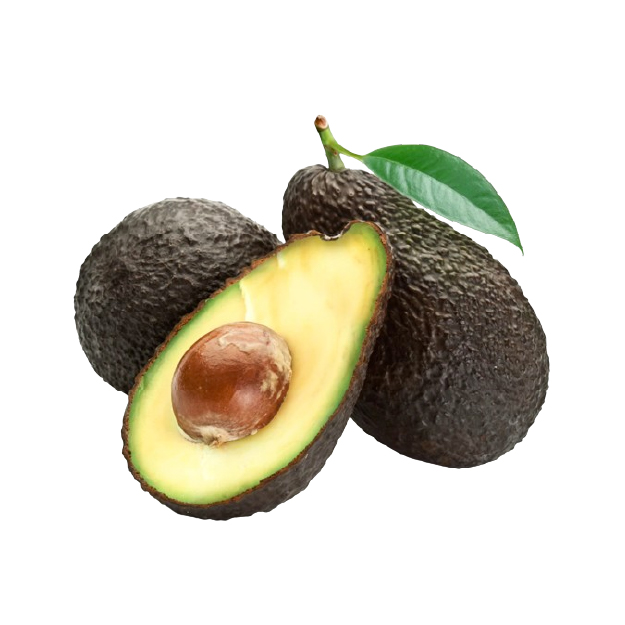
Avocado Hass
Origin – Rwanda, Kenya, Tanzania,Zimbabwe
The Hass avocado is a large-sized fruit weighing 200 to 300 grams (8 to 10 oz). When ripe, the skin becomes a dark purplish-black and yields to gentle pressure.
Named after its original cultivator, Rudolph Hass, is a popular variety of avocado known for its exceptional taste, creamy texture, and rich nutritional profile. It is a medium-sized fruit with a dark, pebbled skin that turns from green to purplish-black as it ripens. The flesh of the Hass avocado is buttery and smooth, with a nutty flavor that is both satisfying and versatile. It is a favorite among avocado enthusiasts and is widely used in various culinary dishes, including guacamole, salads, sandwiches, and smoothies. In addition to its delectable taste, the Hass avocado is highly nutritious, containing beneficial monounsaturated fats, fiber, vitamins, and minerals. Its versatility, combined with its delicious taste and health benefits, has made the Hass avocado a beloved ingredient in kitchens around the world.
Avocado Hass
Rwanda, Kenya, Tanzania, Zimbabwe
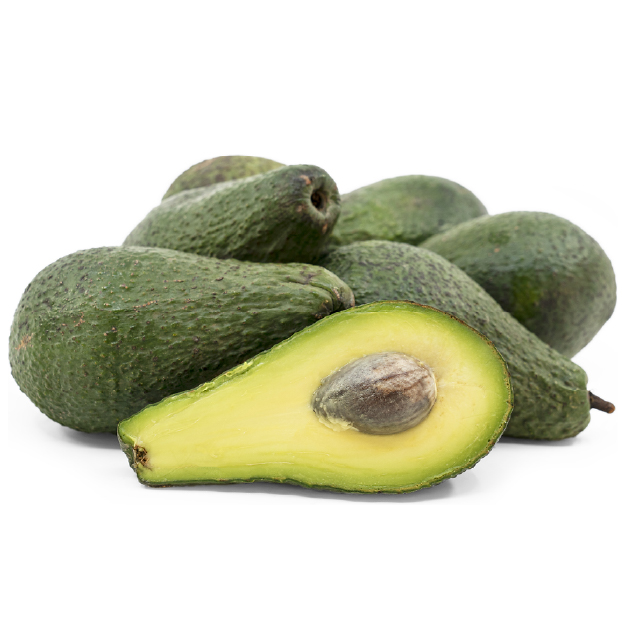
Avocado Hass
Origin – Zambia
Avocado Pinkerton is a distinct and unique variety of avocado that is known for its elongated shape and vibrant green skin.
Named after the Pinkerton family, who were instrumental in its development and cultivation. The Pinkerton avocado is medium to large in size and has a smooth, glossy skin that remains green even when fully ripe. Its flesh is pale yellow and has a creamy, buttery texture with a rich, nutty flavor. One notable characteristic of the Pinkerton avocado is its low oil content, which contributes to its smooth texture and mild taste. It is a versatile avocado variety that can be used in a variety of culinary creations, including salads, sandwiches, and as a topping for various dishes. Additionally, the Pinkerton avocado is highly regarded for its excellent shelf life, making it a preferred choice for commercial distribution. With its unique shape, creamy texture, and delightful flavor, the Pinkerton avocado stands out as a beloved choice among avocado enthusiasts and culinary enthusiasts alike.
Avocado Pinkerton
Zambia

Fine and Extra Beans
Origin – Rwanda
Fine and Extra Beans
Rwanda
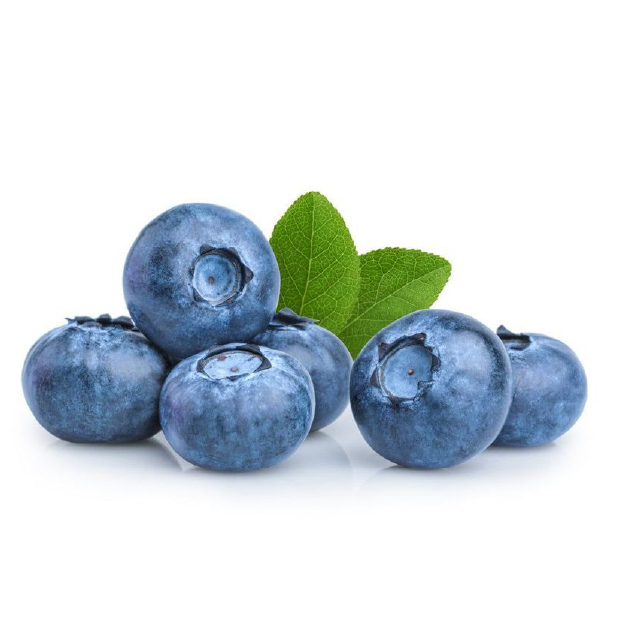
Blueberries
Origin – Zimbabwe
Blueberries are small, round berries that are known for their vibrant blue color and sweet-tart flavor. They belong to the Vaccinium genus and are native to North America. Blueberries are packed with antioxidants, vitamins, and minerals, making them a nutritious addition to a balanced diet. These berries are often enjoyed fresh as a healthy snack or incorporated into various culinary creations, such as smoothies, baked goods, salads, and jams. Blueberries are also known for their versatility and can be frozen for later use without compromising their taste or nutritional value. Whether eaten on their own or used as an ingredient in recipes, blueberries are a delicious and nutritious fruit that is cherished for its delightful taste and numerous health benefits.
Blueberries
Zimbabwe
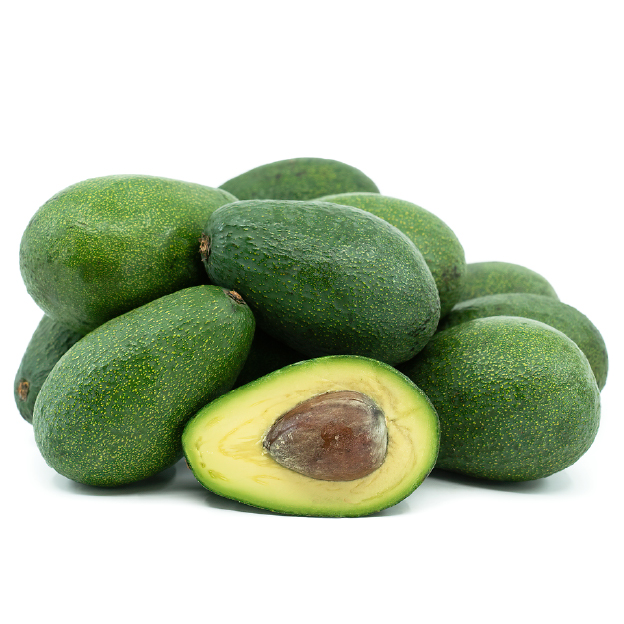
Avocado Fuerte
Origin – Rwanda, Kenya, Tanzania
Prized for its rich, nutty flavor, Fuerte avocados are 8 to 16 oz (226 to 452g) in size, with relatively smooth green skin. When ripe, the skin peels easily revealing a greenish-yellow flesh. Fuerte is considered by many growers and consumers to be the best-tasting commercial variety of avocado.
Named after its original cultivator, Rudolph Hass, is a popular variety of avocado known for its exceptional taste, creamy texture, and rich nutritional profile. It is a medium-sized fruit with a dark, pebbled skin that turns from green to purplish-black as it ripens. The flesh of the Hass avocado is buttery and smooth, with a nutty flavor that is both satisfying and versatile. It is a favorite among avocado enthusiasts and is widely used in various culinary dishes, including guacamole, salads, sandwiches, and smoothies. In addition to its delectable taste, the Hass avocado is highly nutritious, containing beneficial monounsaturated fats, fiber, vitamins, and minerals. Its versatility, combined with its delicious taste and health benefits, has made the Hass avocado a beloved ingredient in kitchens around the world.
Named after the Spanish word for “strong,” which aptly describes its robust flavor and sturdy nature. The Fuerte avocado is larger in size compared to the Hass variety and has a smooth, glossy green skin that remains green even when ripe. The flesh of the Fuerte avocado is pale green and has a creamy, buttery texture with a slightly milder taste than the Hass. It is often praised for its versatility in the kitchen, making it suitable for a wide range of culinary applications. The Fuerte avocado is commonly used in salads, sandwiches, and spreads, and its creamy consistency makes it an excellent choice for making smoothies and desserts. With its rich flavor and adaptable nature, the Avocado Fuerte has become a favorite among avocado enthusiasts and is enjoyed by food lovers around the world.
Avocado Fuerte
Rwanda, Kenya, Tanzania
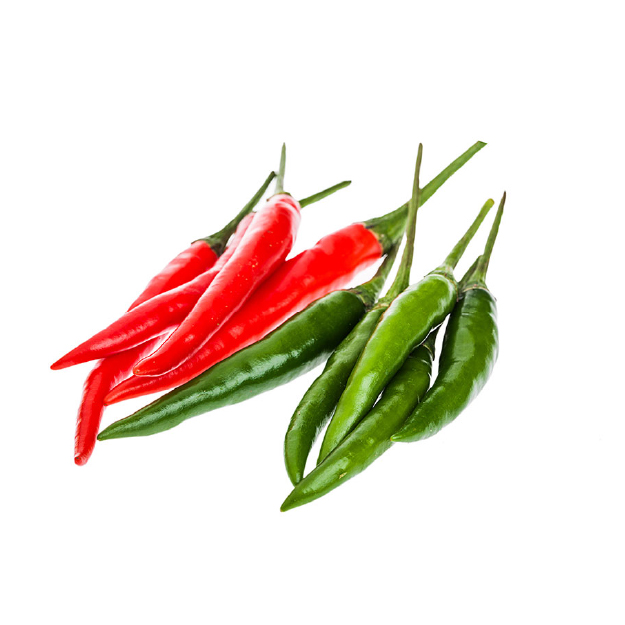
Red and Green Chilies
Origin – Rwanda
Red and Green Chilies
Rwanda

Passion Fruit
Origin – Zimbabwe, Rwanda
Passion fruit, scientifically known as Passiflora edulis, is a tropical fruit that is highly regarded for its unique flavor and vibrant appearance. It is native to South America but is now cultivated in many tropical and subtropical regions around the world.
The outer skin of the passion fruit is thick and wrinkled, ranging in color from dark purple to yellow. Inside, the fruit contains a jelly-like pulp filled with small, black seeds. The pulp has a distinctive tart and sweet flavor, with tropical notes that are both tangy and refreshing.
Passion fruit is not only cherished for its taste but also for its nutritional benefits. It is a rich source of vitamins A and C, dietary fiber, and antioxidants. It is also low in calories, making it a healthy addition to a balanced diet.
The fruit can be enjoyed in various ways. It is often eaten fresh by scooping out the pulp and seeds with a spoon. The pulp can also be strained to make a flavorful juice that can be used in beverages, cocktails, desserts, and sauces. Additionally, passion fruit is a popular ingredient in jams, jellies, and ice creams, adding a delightful tropical twist.
Beyond its culinary uses, passion fruit is also known for its medicinal properties. It is believed to have antioxidant and anti-inflammatory effects, and its high fiber content may support digestive health.
Passion fruit’s vibrant appearance, tropical flavor, and nutritional benefits make it a beloved fruit around the world. Whether enjoyed on its own or used as an ingredient in various recipes, passion fruit adds a burst of tropical goodness and a touch of exotic flair.
Passion Fruit
Zimbabwe, Rwanda
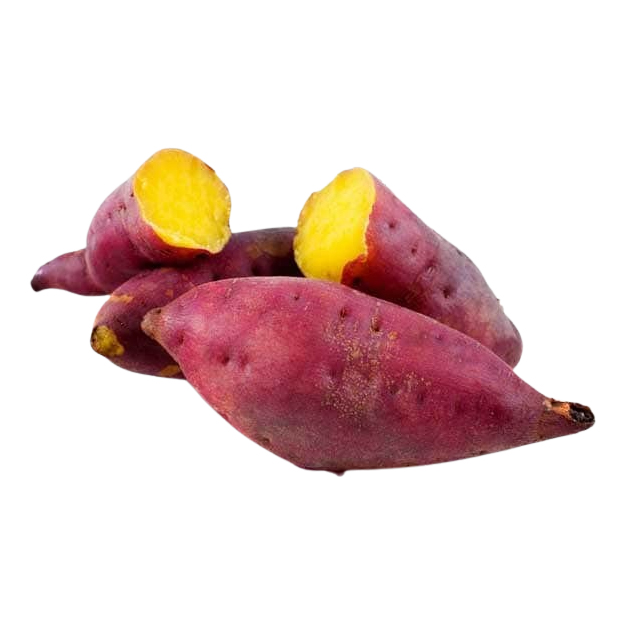
Sweet Potatoes
Origin – Zimbabwe
Sweet potatoes, scientifically known as Ipomoea batatas, are starchy root vegetables that are widely enjoyed for their sweet and earthy flavor. They are native to Central and South America and have become popular worldwide due to their versatility and nutritional benefits.
Sweet potatoes come in various colors, including orange, yellow, purple, and white. The most common variety is the orange-fleshed sweet potato, which is rich in beta-carotene, a precursor to vitamin A. They are also a good source of dietary fiber, vitamins C and B6, potassium, and antioxidants.
These tuberous vegetables can be prepared in numerous ways, making them a versatile ingredient in both sweet and savory dishes. They can be baked, boiled, steamed, roasted, or mashed. Sweet potato fries, chips, and casseroles are popular savory options, while sweet potato pies, puddings, and cakes are well-loved dessert choices.
Due to their natural sweetness, sweet potatoes can be used as a healthier alternative to regular potatoes in many recipes. They add depth of flavor and a touch of natural sweetness to dishes while providing valuable nutrients.
In addition to their culinary appeal, sweet potatoes are also valued for their potential health benefits. They have a low glycemic index, meaning they release sugar into the bloodstream at a slower rate, which can help maintain stable blood sugar levels. They are also high in antioxidants, which may contribute to reducing inflammation and boosting overall health.
Overall, sweet potatoes are a delicious and nutritious vegetable that can be enjoyed in various preparations. Their versatility, sweet taste, and health benefits make them a popular choice for a wide range of dishes and diets.
Sweet Potatoes
Zimbabwe
Discover Our Future Product Lines
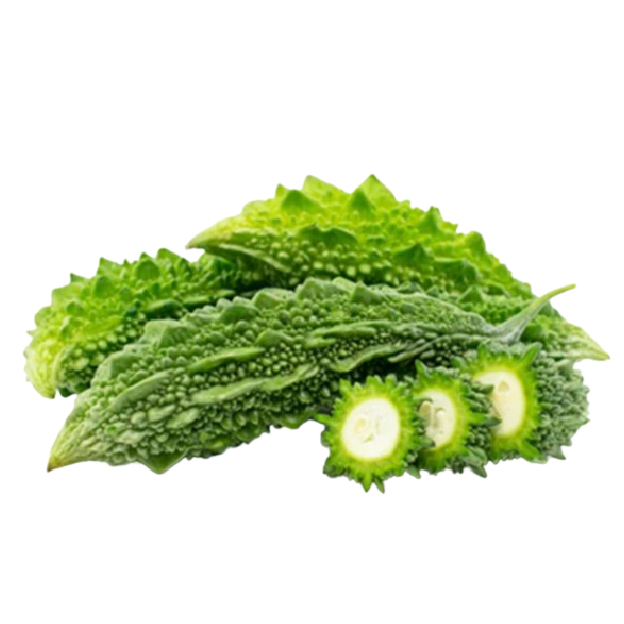
Karela
Origin – Rwanda
Karela, also known as bitter gourd or bitter melon, is a tropical vegetable that is widely recognized for its distinctive bitter taste and unique appearance. It belongs to the Momordica charantia species and is native to South Asia.
Karela has a rough, bumpy skin that is usually green in color, and its shape resembles a cucumber or gourd. The flesh of the karela is pale green or white, and it contains numerous seeds surrounded by a bitter juice.
Despite its strong bitter flavor, karela is a popular ingredient in many cuisines, particularly in Indian, Chinese, and Southeast Asian cooking. It is often used in stir-fries, curries, soups, and pickles. The bitterness of karela is balanced with various spices and ingredients to create flavorful dishes.
In addition to its culinary uses, karela is also valued for its potential health benefits. It is known to be low in calories and rich in fiber, vitamins, and minerals. Karela is believed to have various medicinal properties, including blood sugar regulation, digestion support, and antioxidant effects. It is often used in traditional herbal remedies and is considered a beneficial vegetable for overall well-being.
Karela can be an acquired taste due to its bitterness, but for those who enjoy its unique flavor, it offers a distinct culinary experience. Whether consumed for its potential health benefits or included in dishes for its culinary appeal, karela continues to be appreciated for its unique characteristics and its contribution to diverse cuisines around the world.
Karela
Rwanda
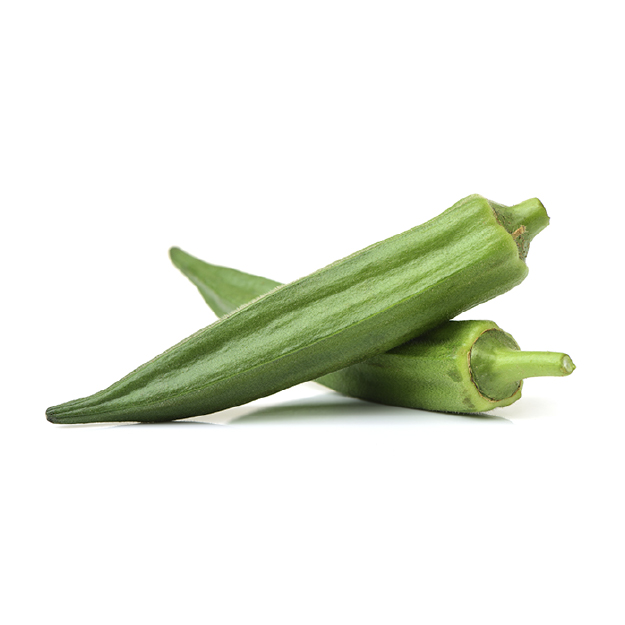
Okra
Origin – Rwanda
Okra, scientifically known as Abelmoschus esculentus, is a flowering plant that produces edible green pods. It is a member of the mallow family and is native to Africa, but it is now cultivated and consumed in many parts of the world.
The pods of the okra plant are long, slender, and ridged, with a vibrant green color. Inside, they contain small, round, and white seeds. Okra is known for its unique texture, which can be slightly slimy when cooked. This characteristic is often attributed to the presence of mucilage, a substance that gives okra its thickening properties.
Okra is a versatile vegetable that is used in a variety of culinary preparations. It is a staple ingredient in many cuisines, including Southern American, Caribbean, Indian, and Middle Eastern. Okra can be cooked in various ways, such as frying, sautéing, stewing, or adding to soups and stews. It is often included in dishes like gumbo, curry, and jambalaya.
In terms of nutrition, okra is low in calories and rich in dietary fiber, vitamins (such as vitamin C and vitamin K), and minerals (such as potassium and magnesium). It is also a source of antioxidants, which can help protect the body against damage from harmful free radicals.
Okra is appreciated not only for its taste but also for its potential health benefits. The fiber content of okra promotes digestive health and helps regulate blood sugar levels. Additionally, the mucilage in okra is believed to have soothing properties for the digestive system.
Whether you enjoy it for its unique texture, its versatility in the kitchen, or its potential health benefits, okra remains a beloved vegetable that adds a distinct touch to many dishes around the world.
Okra
Rwanda

Long Purpule Aubergine
Origin – Rwanda
The Long Purple Aubergine, also known as the eggplant or brinjal, is a vegetable that belongs to the Solanaceae family. It is characterized by its elongated shape and dark purple or deep purple-black skin. The Long Purple Aubergine is a popular variety of eggplant that is widely cultivated and consumed in many cuisines around the world.
The flesh of the Long Purple Aubergine is creamy white with a slightly spongy texture. When cooked, it becomes soft and tender, making it suitable for a variety of culinary preparations. The flavor of the Long Purple Aubergine is mild and slightly earthy, allowing it to absorb the flavors of other ingredients in a dish.
This variety of eggplant is versatile and can be prepared in numerous ways. It is commonly used in stir-fries, curries, stews, and grilled dishes. It can also be baked, roasted, or stuffed. The Long Purple Aubergine is a key ingredient in popular dishes such as moussaka, ratatouille, and baba ghanoush.
In terms of nutrition, the Long Purple Aubergine is low in calories and a good source of dietary fiber, vitamins, and minerals. It contains antioxidants, such as nasunin, which may have potential health benefits.
When selecting Long Purple Aubergines, choose ones that are firm, with smooth and glossy skin. Avoid eggplants that are wrinkled or have soft spots. They can be stored in a cool, dry place or in the refrigerator for a few days.
The Long Purple Aubergine is a versatile and delicious vegetable that adds flavor and texture to a wide range of dishes. Its deep purple color and unique shape make it visually appealing, while its mild taste makes it a versatile ingredient for various culinary creations.
Long Purpule Aubergine
Rwanda
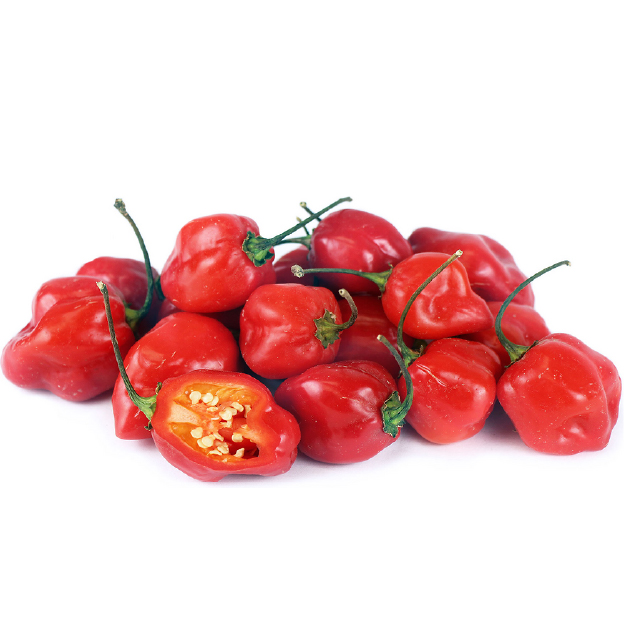
Red Habanero
Origin – Rwanda
The Red Habanero pepper, known scientifically as Capsicum chinense, is a fiery chili pepper that is highly regarded for its intense heat and distinctive fruity flavor. It is native to the Yucatan Peninsula in Mexico and is now cultivated in many parts of the world.
The Red Habanero pepper is small and typically ranges from 1 to 2 inches in length. It is characterized by its vibrant red color, wrinkled skin, and distinctive lantern-like shape. Despite its small size, it packs a powerful punch in terms of heat, often ranking high on the Scoville scale, which measures the spiciness of chili peppers.
Beyond its fiery heat, the Red Habanero pepper is also known for its unique flavor profile. It offers a fruity and citrusy taste with hints of sweetness, making it a popular choice for adding both heat and flavor to various dishes. The flavor of the Red Habanero can enhance salsas, sauces, marinades, and spicy dishes, providing a robust and complex taste experience.
When handling or consuming Red Habanero peppers, it’s important to exercise caution due to their intense heat. The capsaicin compound responsible for the pepper’s spiciness can cause a burning sensation on the skin and mucous membranes.
In addition to its culinary uses, the Red Habanero pepper is also valued for its potential health benefits. It contains vitamins A and C, as well as capsaicin, which is believed to have anti-inflammatory and pain-relieving properties.
The Red Habanero pepper’s fiery heat and unique flavor have made it a sought-after ingredient for those who enjoy spicy foods and are looking to add a bold kick to their culinary creations. Whether used sparingly to add a touch of heat or incorporated more generously to create fiery dishes, the Red Habanero pepper brings intensity and excitement to the world of spicy cuisine.
Red Habanero
Rwanda
